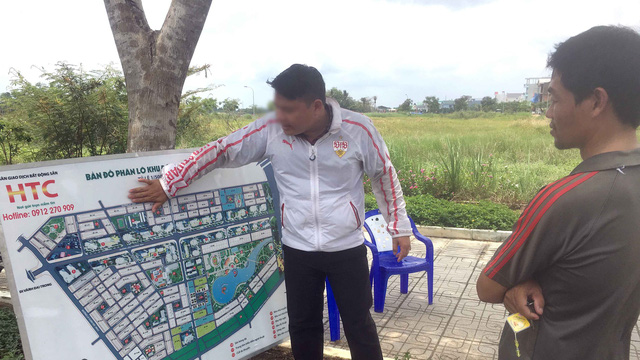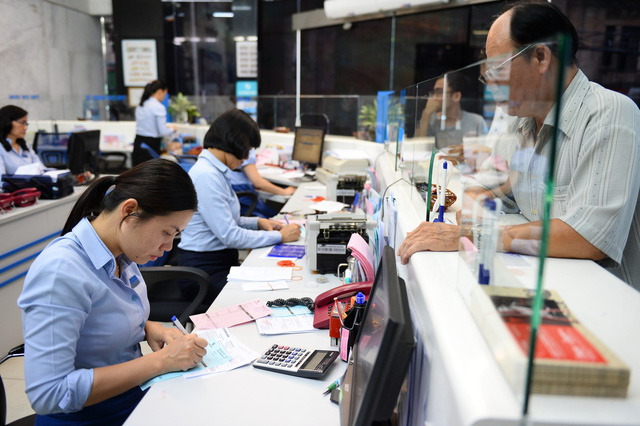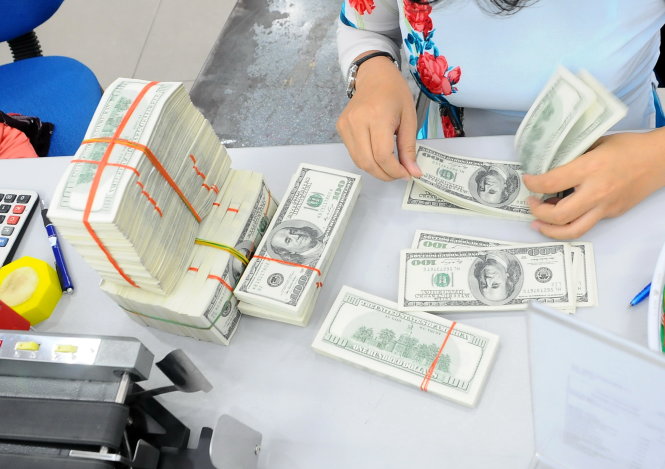Banks in Ho Chi Minh City are raising the bar on real estate loans to stop a property bubble resulting from hiking land prices on the outskirts.
Loans taken out for investment in real estate in District 9 and the rural districts of Can Gio, Cu Chi and Hoc Mon in Ho Chi Minh City – where land prices have gone through the roof in recent months – are subject higher interest rates and stricter loan conditions, according to the local branch of Vietnam’s central bank.
Hien, a resident in Ho Chi Minh City who wanted to borrow VND1 billion (US$44,000) to invest in real estate, said she was only allowed a favorable interest rate of 8.8 percent a year for half of the loan.
The remaining half, she said, would be lent for 10.7 percent a year, with additional binding conditions barring her from paying off the loan early.
“Before, I would be able to take out the entire loan for a favorable interest rate,” Hien said.
Apart from a few major state-owned banks which still provide loans for 8-9 percent a year, most commercial banks in the city have raised interest rates to up to 12.5 percent for lending in commercial real estate.
This number represents a two-percentage-point rise from previous years.
 |
| A man introduces a piece of land in District 9, Ho Chi Minh City to a prospective buyer. Photo: Tuoi Tre |
According to Nguyen Hoang Minh, deputy director of the Ho Chi Minh City branch of the State Bank of Vietnam, lenders have grown more cautious in reviewing loan requests in the real estate sector in view of recent land price hikes in the city’s outlying districts.
Bankers tend to approve loan amounts of around half the property’s value, give or take 20 percentage points, instead of the full amount as before, Minh said.
Some banks even refuse to accept the property bought with borrowed money as collateral, and require the loan taker to put an existing property up for mortgage.
“Investors rely on bank loans, so tightened lending standards would prevent speculative investments into the real estate sector,” said D., an experienced property investor in Ho Chi Minh City.
Nguyen Xuan Loc, general director of Techcomreal, the realty business of Vietnam Technological and Commercial Joint Stock Bank (Techcombank), asserted the move is necessary to prevent a land and housing bubble that is forming in the city.
“If banks give out loans carelessly, it would be a huge problem when the market freezes,” Loc said.
 |
| Customers carry out transactions at a bank in Vietnam. Photo: Tuoi Tre |
$11.46 billion in outstanding loans
Lending in the real estate sector makes up 10.8 percent of Ho Chi Minh City’s total outstanding loans as of Friday, according to Minh, the deputy director of the Ho Chi Minh City branch of the State Bank of Vietnam.
By the end of 2017, the absolute amount of outstanding loans in the southern hub had been VND1.75 quadrillion ($76.83 billion).
This translates to around VND198 trillion ($8.69 billion) in outstanding loans in the real estate sector.
However, there is also an ‘unofficial’ amount of lending used for property purchase being disguised as consumer loans.
According to experts, this constitutes 28.7 percent of consumer loans taken out in the city, equivalent to around VND63.14 trillion ($2.77 billion).
If this number is counted, there are currently around VND261.14 trillion ($11.46 billion) in total outstanding loans in the real estate sector in Ho Chi Minh City.
Like us on Facebook or follow us on Twitter to get the latest news about Vietnam!


















































